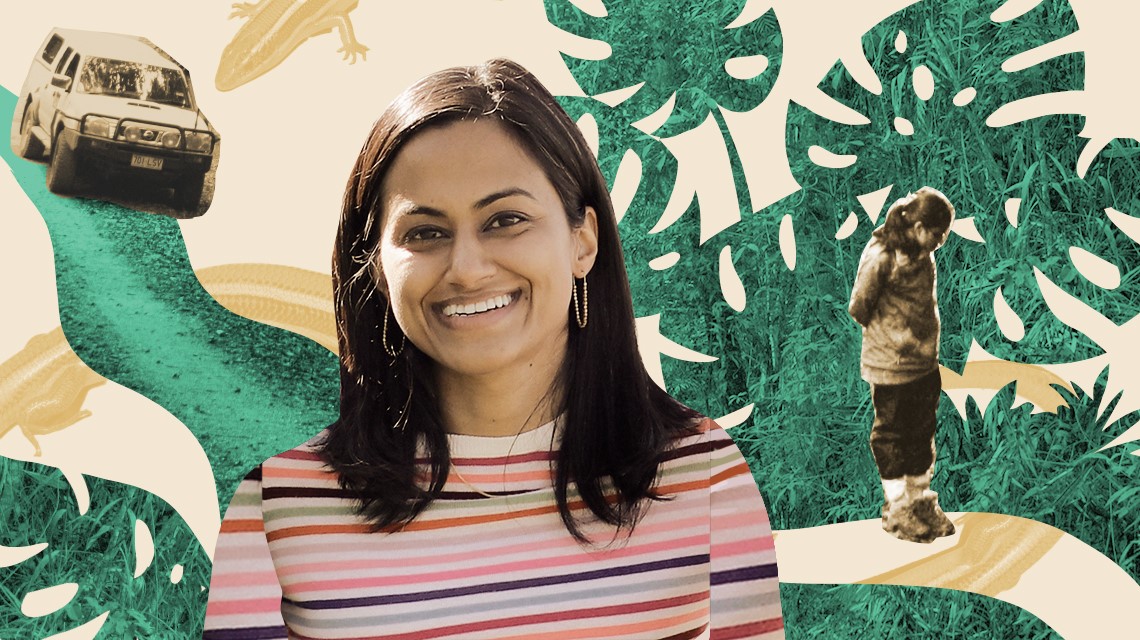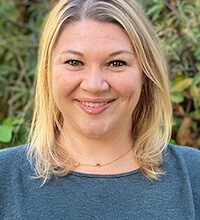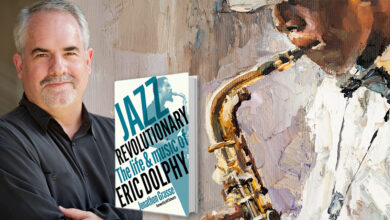
CSUDH Associate Professor of Biology Sonal Singhal has been honored by the Society for the Study of Evolution (SSE) for her research work on lizard speciation. Her paper “Strong Selection Against Hybrids Maintains a Narrow Contact Zone Between Morphologically Cryptic Lineages in a Rainforest Lizard” was named one of the 25 top works in speciation research by women authors by Evolution, SSE’s prestigious international journal.
Singhal co-authored the paper in 2011 with Craig Moritz, who at the time was director of the Museum of Vertebrate Zoology at the University of California, Berkeley. Singhal’s research focused on a pair of lizard species living in a “hybrid zone” of the Australian rain forest.
A hybrid zone is an area that has two different species or populations that are distinctly different, but meet there and breed. Singhal says the zones can be seen as “laboratories for understanding evolution.”
“We get a chance to understand what happens when species that have been separated for millions of years interact with each other. If you look at the interactions between the two groups, you can understand what is or is not keeping them apart and keeping them distinct.”
Singhal studied a hybrid zone between two populations within a species of lizards called skinks. These skinks were small brown lizards that live in Australia’s rainforest. “These two populations were separated for such a long time that they became as genetically different from each other as humans are from chimps,” says Singhal. “But they look identical! If you hold a lizard from population one next to one from population two, you wouldn’t be able to tell them apart.”
The research demonstrated that the two species were interacting and breeding, but that the hybrid babies had very low fitness, i.e., they were not very good at surviving or reproducing. ”Our data was very clear about that,” says Singhal. “My colleagues and I felt that these two populations should actually be called different species because they’re so distinct.” Within a decade, the two species were actually named as two distinct species, largely due to Singhal’s research.
Having her paper recognized by Evolution “is probably one of my biggest professional highlights,” says Singhal. “I have intellectual heroes — people I’ve always really respected and valued the way they approach scientific problems — and a lot of those people are on the list! To see myself being considered as their intellectual peer is a true honor. Part of me still feels like I’m 22 and trying to figure out the world!”
She is quick to point out that her work does not exist in a vacuum, and that “as with most science, I could only do what I did because others had done such amazing work before me.”
Singhal continues to specialize in lizard speciation research, and has become one of the leading experts in the field. The results of her most recent study were published in the January, 2022 edition of The Proceedings of the National Academy of Sciences (PNAS) journal.
Titled “No link between population isolation and speciation rate in squamate reptiles,” the study examined lizard and snake populations in South American savannahs, in an effort to determine if geographic isolation causes new species to form more readily. As the title states, geography was found to have no effect on speciation rates.
Her research got a boost last year with a $234,000 grant from the National Science Foundation (NSF) for a project called “Species Limitation in North American Lizards.” She and a team of researchers from CSUDH, University of Texas-Arlington, and University of Washington will collaborate on the project, whose goal is to define and delineate how many species of lizards there are across 30 groups of North American lizards.
“We’re going to combine genetic, ecological, and morphological data to try to understand what the real species boundaries are, how many lizards are within these species, and how many species there actually are living in our area,” says Singhal.
Her current project can be seen as a natural outgrowth or extension of the Australian rain forest project which she was recognized for. “One of the major aims of my research is using genetics to understand how many species there are, and that project was where a lot of this all started.”








